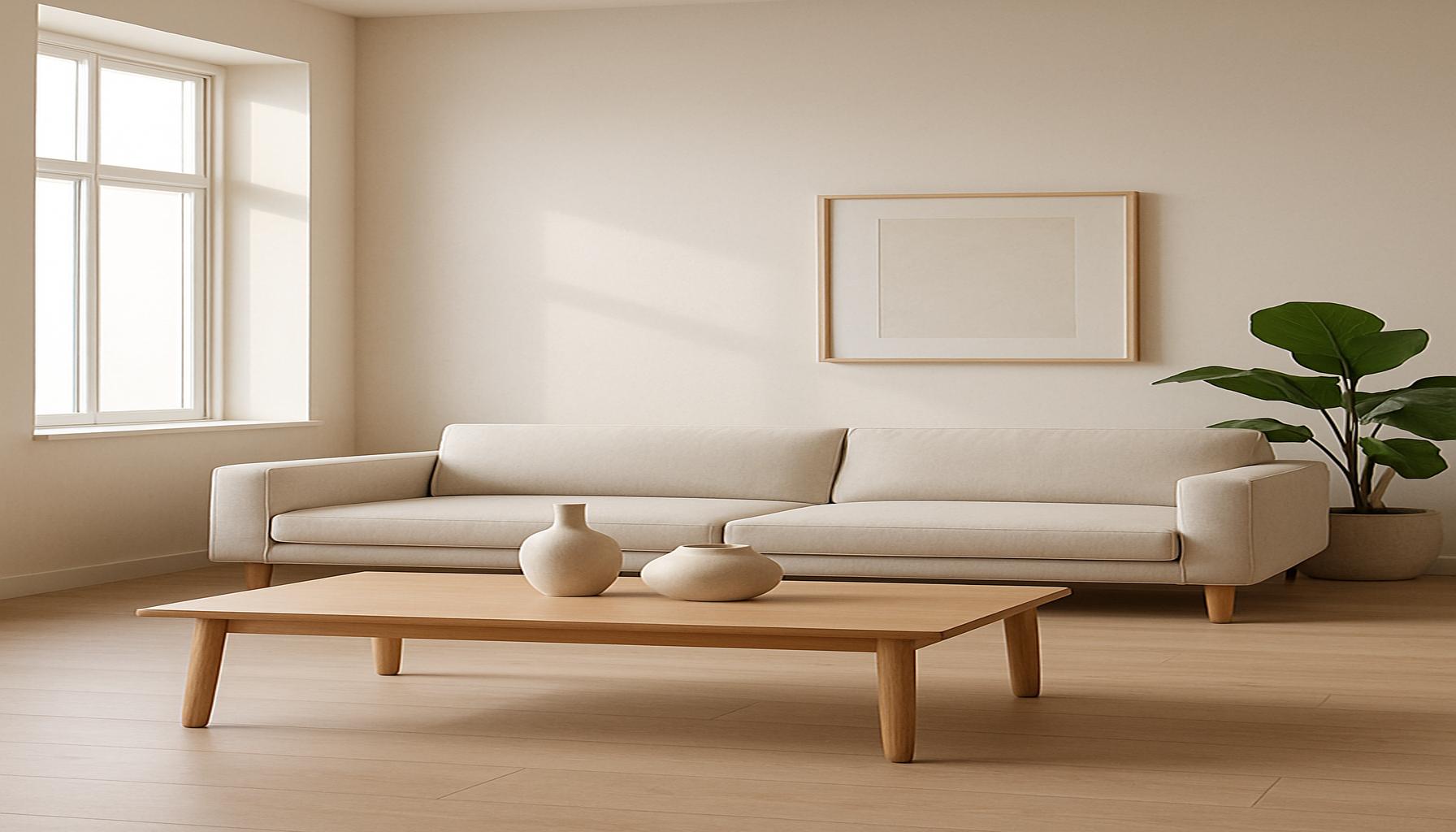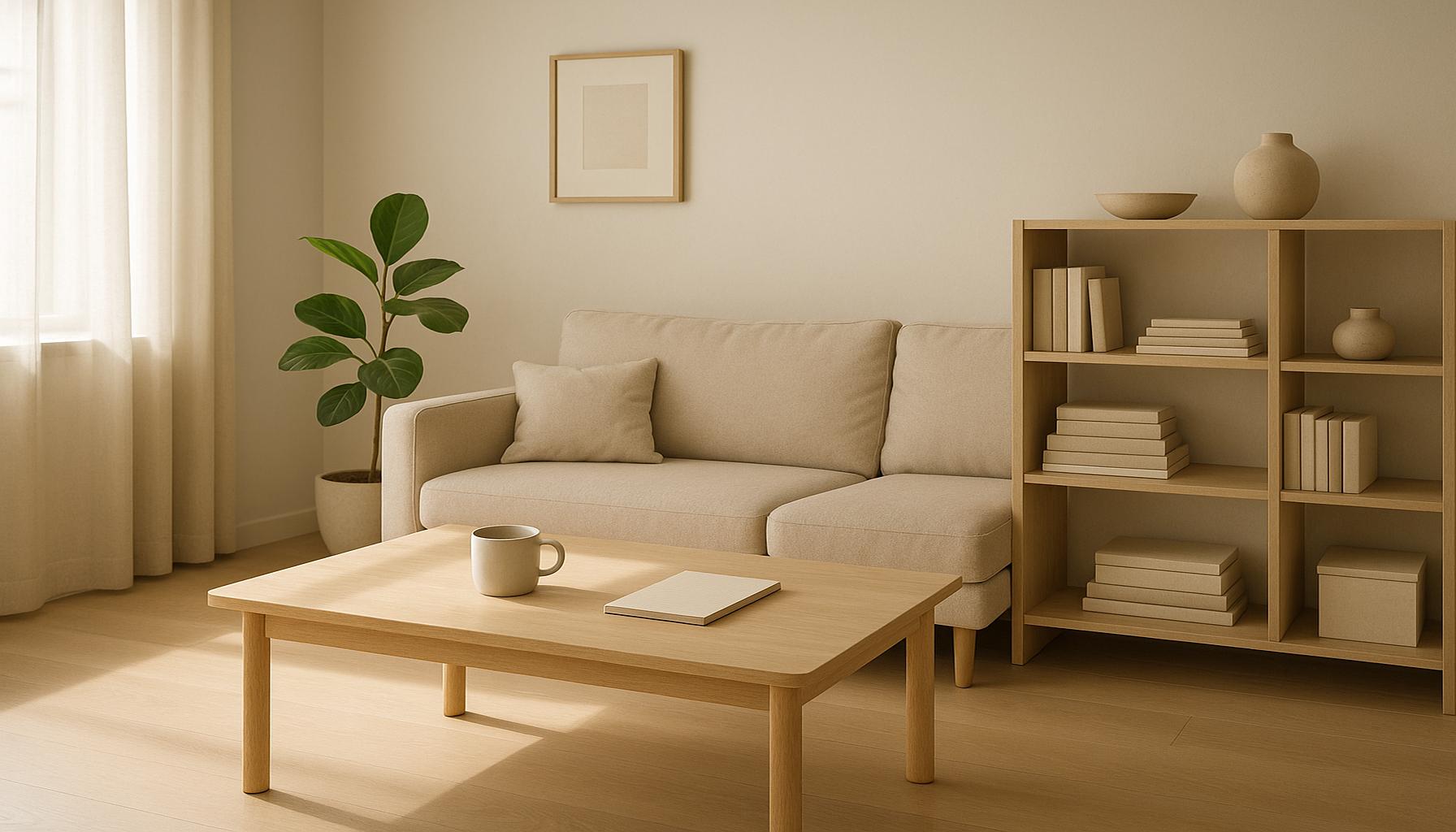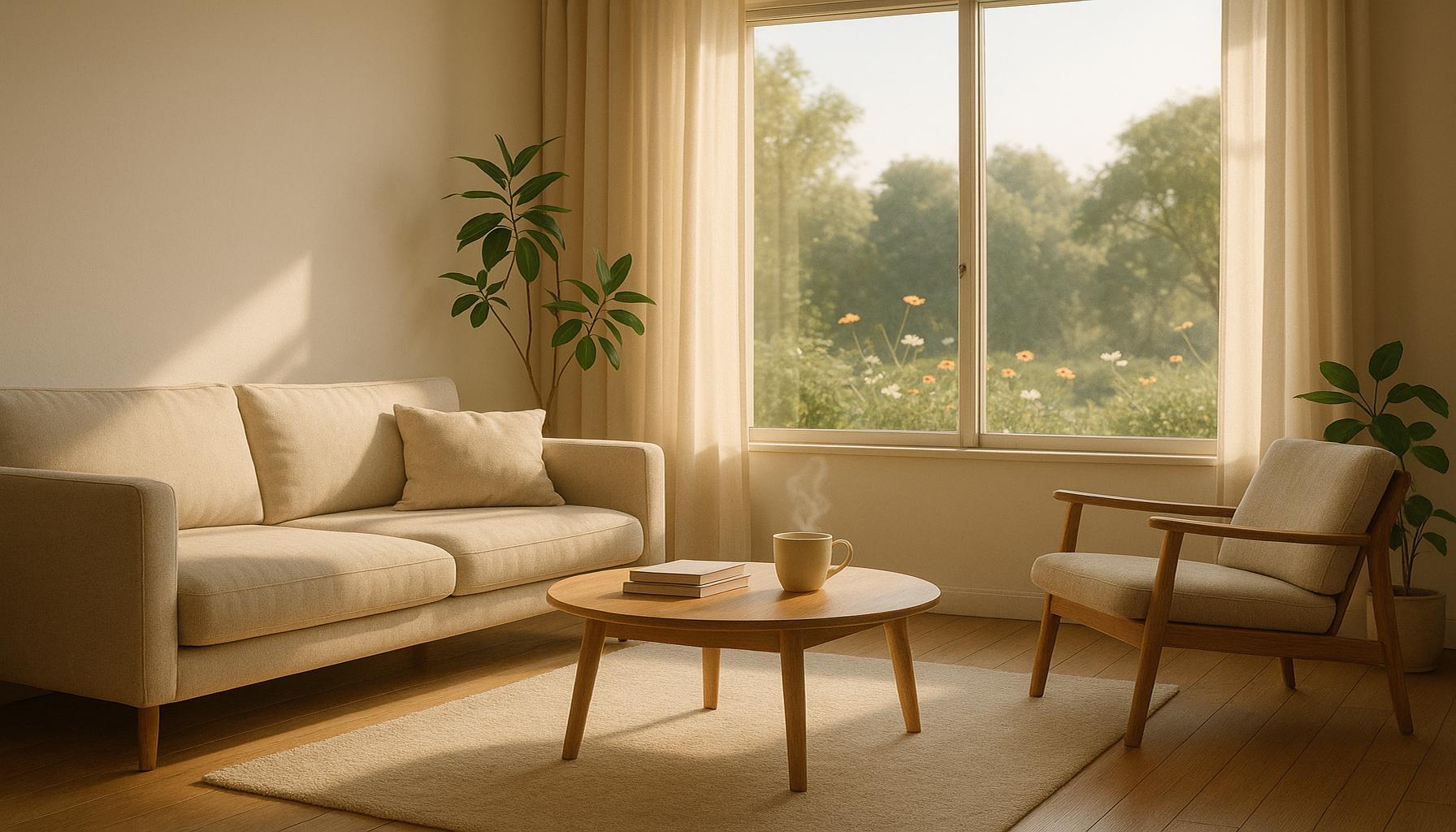Simplicity in Decoration: Tips to Transform Your Space with Fewer Items

Embrace Minimalism in Your Home
In a world overflowing with choices, the art of simplicity in decoration has emerged as a powerful trend. Transforming your space doesn’t require an extensive collection of items; instead, it can thrive on the beauty of minimalism. By focusing on functionality and aesthetic clarity, you can create a serene environment that fosters peace and creativity.
Why Choose Simplicity?
- Promotes a clutter-free atmosphere: A minimalist home encourages you to part ways with items that no longer serve a purpose, making your space feel more open and inviting.
- Enhances visual appeal: The simplicity of design allows each chosen item to shine, creating a harmonious and visually pleasing environment.
- Encourages mindfulness and well-being: A streamlined space can reduce distractions, allowing for greater focus and mental clarity.
Adopting a simple decorating style involves thoughtful selection and curation. It’s more than just removing excess; it’s about being intentional with every piece that enters your space. Consider these key aspects when reimagining your living environment:
Key Principles of Simple Decoration
- Neutral Color Palettes: Utilizing calming hues like soft whites, grays, and earth tones helps create a cohesive look throughout your home. Walls painted in light beige or dove gray can make a room feel more spacious, while pops of color can be introduced through carefully selected decor items, such as cushions or artwork.
- Natural Materials: Incorporating elements such as wood, stone, and lush greenery adds an organic touch that connects your home with nature. For instance, a reclaimed wood coffee table can serve as a stunning focal point while also promoting sustainability.
- Multifunctional Furniture: Choose pieces that serve more than one purpose, like a sofa bed or a storage ottoman. This approach is especially beneficial in smaller spaces, where maximizing utility is key without compromising on style.
Moreover, consider the concept of ‘soft minimalism,’ which combines modern minimalistic principles with warm, inviting elements. This may include layering textures through soft throws or using ambient lighting to create warmth in an otherwise stark environment. As you delve into the world of simplicity, you’ll discover that less truly can be more. The minimalism trend has even influenced popular design shows across the United States, where homeowners are guided to strip away the unnecessary and embrace what truly matters in their living spaces.
Join us in exploring how these methods can illuminate your space and enhance your everyday life. By implementing these principles, you not only cultivate a more functional home but also pave the way for a lifestyle that champions clarity, peace, and intentionality.
DIVE DEEPER: Click here to discover more strategies
The Essentials of Simple Decoration
As you embark on the journey of redefining your living space, it’s essential to embrace the notion that simplicity in decoration is not merely about a lack of items but rather the purposeful selection of what truly enhances your environment. Understanding that less is more allows for the creation of a space that feels more cohesive and alive. This initial phase of transformation can be invigorating, as it encourages you to reassess your priorities, both in terms of design aesthetics and personal belongings.
Identify Your Style and Needs
Before you dive into the world of minimalistic design, take a moment to reflect on your unique style. Whether your tastes lean towards modernism, bohemian influences, or industrial chic, knowing your preferences is crucial. Here are some steps to guide this process:
- Evaluate Your Existing Items: Take stock of what you already own. Ask yourself which items bring you joy or serve an essential function. This exercise is key to identifying what to keep and what to let go.
- Create a Vision Board: Collect images that resonate with your ideal home aesthetic. Use platforms like Pinterest to curate boards that showcase colors, materials, and designs that inspire you. This will help you visualize your future space.
- Define Functional Zones: Consider the purpose of each room in your home. Designating areas for specific activities—like work, relaxation, or entertainment—will streamline your decor choices and allow for more intentional selections of decor items.
By defining your style and needs, you set the groundwork for a home that not only looks good but also feels right. This self-exploration is pivotal in avoiding the common pitfall of simply filling space with items that may not truly resonate with you.
Strategic Item Selection
Once you’ve established a clearer idea of what you want, focus on the strategic selection of decor items. This involves choosing those that not only complement your space but also enhance its beauty while maintaining functionality. Here are some tips to consider:
- Invest in Quality over Quantity: Instead of filling your home with numerous cheaper items, opt for a few high-quality pieces that resonate with your style. A beautifully crafted chair or a stunning piece of artwork can serve as dramatic focal points.
- Incorporate Meaningful Decor: Choose decor that tells a story or holds sentimental value. Family heirlooms or souvenirs from your travels can create a warm atmosphere and spark conversations.
- Maintain Balance: Strive for symmetry and balance within your space. Pair larger items with smaller ones to create visual interest without overwhelming the viewer. This approach allows for the potential of each piece to shine individually.
As you begin to implement these strategies into your decorating process, you will create a welcoming and thoughtful environment that reflects who you are. Remember, the goal of simplicity is not to sacrifice personality for minimalism; it’s about striking that delicate balance where functionality meets style, leading to a home that feels both inviting and truly yours.
Simplicity in Decoration: Tips to Transform Your Space with Fewer Items
Embracing minimalism in interior decor can seem daunting, but with a few strategic tips, you can effortlessly transform your space into a haven of simplicity. Here, we delve into practical approaches that not only declutter but also enhance the aesthetic appeal of your home.
First, assess your items critically. Think of each piece as contributing to the overall ambiance of the room. Consider functionality and emotional connection—keep items that serve a purpose or hold sentimental value while letting go of the excess. This approach promotes a more intentional living space.
Next, focus on color palettes. Choosing a cohesive color scheme can visually streamline your decor. Select neutral or soothing tones as a base, accentuating with a few vibrant accessories. This will create harmony in your environment and ensure that even with fewer items, your space feels complete.
Additionally, consider multi-functional furniture. Pieces that serve dual purposes, such as an ottoman that doubles as storage, can cut down on clutter while maximizing utility. This shift does not only promote simplicity but also opens up your space, making it feel larger and more inviting.
Finally, establish a Statement piece—this could be a large artwork, an elegant light fixture, or a unique piece of furniture. It serves as a focal point, capturing attention and enriching the overall aesthetic of the room. When combined with minimalist decor, a striking statement piece can elevate your space significantly.
| Category 1 | Category 2 |
|---|---|
| Color Palettes | Choose harmonious and neutral tones to enhance simplicity. |
| Multi-functional Furniture | Utilize furniture that serves multiple purposes to reduce clutter. |
By implementing these strategies, you’ll not only declutter your space but also cultivate an environment filled with tranquility and elegance. With every item carefully chosen for its contribution to your lifestyle and aesthetic, you will find a new appreciation for the beauty that exists in simplicity.
DISCOVER MORE: Click here to learn how decluttering can transform your mindset
Creating Atmosphere through Color and Texture
After narrowing down your items, the next step towards achieving simplicity in decoration is to carefully consider the role of color and texture in your space. Both elements can dramatically impact the mood of a room while complementing your minimalist aesthetic. Here are several strategies to utilize color and texture effectively:
Focus on a Color Palette
Selecting a consistent color palette will unify your decor choices and help maintain a serene environment. A limited color scheme emphasizes simplicity and avoids visual clutter. Consider the following:
- Neutral Tones: Soft whites, beiges, and grays are popularly embraced for creating a calming backdrop. They allow for flexibility in design and pair beautifully with bolder accents.
- Accent Colors: Instead of oversaturating your space with various hues, choose one or two accent colors that can bring life to your environment. For instance, a single navy blue cushion or a green plant can create an appealing contrast within a neutral room.
- Natural Influences: Earthy tones like terracotta, sage green, and soft blues can foster a connection with nature, enhancing the simplicity-focused approach. These colors evoke calm and facilitate relaxation, promoting a soothing atmosphere.
Integrate Texture for Depth
While sticking to fewer items, integrating various textures can enrich your space without overwhelming visuals. Textural contrast can draw interest and create the illusion of a layered environment. Here are some ideas:
- Mix Materials: Use a combination of materials such as wood, metal, fabric, and stone. For example, a wooden table paired with metal chairs and soft fabric throws can create an inviting yet simple look.
- Consider Textured Fabrics: Add dimension to your space through textiles. Choose textiles like wool, linen, or velvet for pillows, throws, and rugs. These materials not only enhance comfort but also engage the senses.
- Layering Techniques: Strategically layer rugs, throws, and curtains to create an intricate feel without clutter. A jute area rug topped with a soft wool rug can add warmth, making the space feel both homey and refined.
Utilize Natural Elements
Incorporating natural elements can seamlessly tie in the simplicity theme while bringing the outside indoors. Natural elements add life without requiring excessive items. Here’s how to integrate nature into your decor:
- Houseplants: Consider adding a few carefully chosen houseplants to freshen the air and add greenery to your space. Plants like succulents or snake plants require minimal maintenance and thrive in various indoor settings.
- Natural Light: Make the most of natural light by positioning mirrors strategically to reflect sunlight throughout the room. This approach can enhance the space’s openness and help create an airy feel.
- Natural Materials: Opt for furniture crafted from materials like reclaimed wood or bamboo. These options not only promote sustainability but also add an organic touch to your decor.
As you thoughtfully incorporate these suggestions into your decorating regime, remember that achieving simplicity is a personal journey rather than a strict guideline. Each choice should resonate with your personal connection to your living space and express a narrative that feels uniquely yours. By prioritizing color, texture, and natural elements, you will create an environment that is not only aesthetically pleasing but also inviting and comforting.
DIVE DEEPER: Click here to enhance your organization skills</
Embrace the Beauty of Minimalism
In conclusion, simplicity in decoration champions the idea that less is indeed more. By curating your space with intention, focusing on a cohesive color palette, and integrating texture and natural elements, you can create an atmosphere that promotes serenity and functionality. The art of minimalist decoration not only reflects a refined aesthetic but also allows for greater emotional clarity within your environment. As you embark on this transformative journey, remember that simplicity is not merely about the absence of items, but rather about the presence of meaningful pieces that resonate with your lifestyle.
Consider the way each chosen element contributes to your daily experience and well-being. Explore the nuances of color and texture that will invigorate your space while maintaining a peaceful ambiance. Furthermore, by incorporating natural elements, you foster a healthier connection to your surroundings, making your home not just a space for living, but a sanctuary for rejuvenation.
Ultimately, the essence of simplicity in decoration lies in appreciating what you own, letting go of excess, and celebrating the beauty of your individuality. As you cultivate a minimalist space, you may find that not only does your environment become more beautiful, but your life may feel lighter as well. Dive deeper into the realm of simplicity, and discover how a few mindful choices can truly transform your living space.


